Contents
Guide
Heartwounds
The Impact of Unresolved Trauma and Grief on Relationships
Tian Dayton, Ph.D.
Library of Congress Cataloging-in-Publication Data
Dayton, Tian.
Heartwounds: the impact of unresolved trauma and grief on relationships/Tian Dayton.
p. cm.
ISBN-13: 978-1-55874-510-0 (pbk.)
eISBN: 978-0-75732-492-5
ISBN-10: 1-55874-510-6 (pbk.)
1. Grief. 2. Psychic trauma. 3. Loss (Psychology) 4. Inter personal relations. 5. Interpersonal relationsCase studies. I. Title.
BF575.G7D3961997
97-34760
158.2dc21
CIP
1997 Tian Dayton
All rights reserved. Printed in the United States of America. No part of this publication may be reproduced, stored in a retrieval system or trans-mitted in any form or by any means, electronic, mechanical, photocopying, recording or otherwise, without the written permission of the publisher.
HCI, its logos and marks are trademarks of Health Communications, Inc.
Publisher: Health Communications, Inc.
301 Crawford Blvd Ste 200
Boca Raton, FL 33432
R-01-07
Cover design by Tian Dayton, Ph.D.
Cover illustration by Aloys Wach
To Alex
Because you have a heart that understands.
There is a brokenness out of which comes the unbroken, a shatteredness out of which blooms the unshatterable.
There is a sorrow beyond all grief which leads to joy and a fragility out of whose depths emerges strength.
There is a hollow space too vast for words through which we pass with each loss, out of whose darkness we are sanctioned into being.
There is a cry deeper than all sound whose serrated edges cut the heart as we break open to the place inside which is unbreakable and whole, while learning to sing.
Rashani
Cofounder of Earthsong, a womans sanctuary in Hawaii

ACKNOWLEDGMENTS

T his is a book of personal stories and research woven together to illustrate and analyze the impact that unresolved trauma and grief can have on relationships throughout life. It could not have been written by research alone. It is the people whose stories are witnessed on these pages who have breathed life and given form and shape to the role that unresolved trauma and grief issues can play in undermining otherwise healthy relationships. I appreciate them, not only for their willingness and honesty but because we have undertaken a portion of each others destiny. We have been partners in our mutual soulmaking. It is a central tenet of psycho drama that in a therapy group, each person becomes a therapeutic agent in each others healing process. I would like to acknowledge these healers who have played such an important part in each others growth.
I would like to thank my Monday night group, clients, psychodrama trainees and students at New York University for sharing their stories with me and with the reader. Their lives are the inspiration for the contents of this book. I feel privileged to have been a part of their journeys and fortunate to be allowed to reveal them in these pages. It is my hope that you, the reader, will see a piece of your own life reflected back to you in this communal sharing of the deepest side of human nature that they have allowed me to bring forward. In the interest of anonymity, all names have been changed.
There are others to whom I am indebted who have helped move this material from literally piles of research into a work that will hopefully be beneficial and comprehensible. Roy Carlisle, through his editorial wisdom, his years of experience in publishing, and his spiritual depth, has helped to yank, cajole, pull and encourage this book out of me and I am ever grateful. Christine Belleris is, as always, helpful, insightful, professional and generous in her demanding role at Health Communications. Gary Seidler and Peter Vegso took this idea seriously and felt it was an important enough subject to support even though, in marketplace terms, it is risky to talk about a subject of such weight. In todays publishing climate of blockbuster books and tell alls, I really appreciate their wish to help people in meaningful ways. Phoebe Atkinson has handed me pieces of research that caught her penetrating eye and enhanced these pages. And Toby Bielawski helped at a crucial point to give a shape that could hold this material and make it accessible.
I also gratefully acknowledge the brilliant research on the subject of grief and trauma of such professionals as Bessel van der Kolk, M.D., Judith Herman, M.D., John Bowlby, M.D., George H. Pollock, M.D., Ph.D., Ester R. Shapiro, Ph.D., and Therese Rando, Ph.D.
As this book goes to press three lives of archetypal significance have passed from this world leaving in their wake an unprecedented outpouring of both grief at their passing and gratitude for their contributions. In acknowledgment of Diana, princess of Wales, Mother Teresa and Victor Frankel who gave us permission to open our hearts to the pain of life and transform its energy into purposeful action while carrying a message of love and hope to the world.

INTRODUCTION

Take this sorrow onto thy heart, and make it a part of thee, and it shall nourish thee till thou art strong again.
L ONGFELLOW , H YPERION
T he use of intimate relationships as a path toward deepening a relationship with self and God is one of the highest callings of intimacy. I have come full circle. As a baby boomer I came of age in the late 1960s and early 1970s. Until then the word unconscious had little meaningit seemed as if it belonged to a realm beyond the reach of human understanding. The idea that each of us had one, and that it had stored within it great pieces of who we were, felt almost hocus-pocus. But we searched. We searched everything from Freud to Autobiography of a Yogi. What was this unseen, amorphous thing that had so much power over our daily decisions and our life thrust? More mysterious still was the thought of such a phenomenon as a collective unconscious. For years I studied Eastern thought, attempting to gain an understanding of something like a deeper self. Until then the world, I thought, was as it appeared, and people were simply who they thought or said they were. As a cultural group we turned our known world upside down in an attempt to get a better look at it, but it appears to me now that in doing so we simply got a different look at it.
I learned to befriend my unconscious in college. Books I read and courses I studied suggested to me that there was a part of me that lay hidden in my inner depths that I could invite to play a positive role in my life. Practicing positive thinking, opening to abundance, trading negative self-concepts for positive ones were all ways that I could use this storehouse of untapped personal power to flow in a direction that I encouraged. My thinking could act as a rudder, steering the vessel of me through the waters of my life in a direction that I could, in some measure, self-determine. It wasnt until later in my life when I entered my own recovery process that I also came to understand that my unconscious was a vast storehouse in which I had slowly accumulated the records of my own life history. The idea that what was stored in this unconscious had tremendous power over my thinking, feeling and behavior, over decisions as wide-ranging as what I chose for lunch to whom I chose to marry, took longer for me to fully grasp.


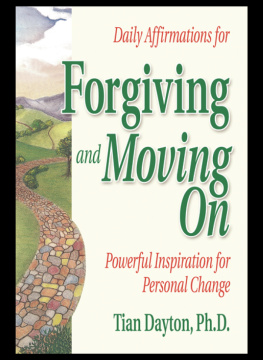
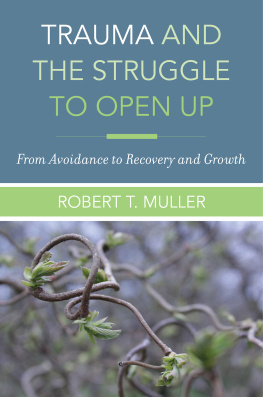
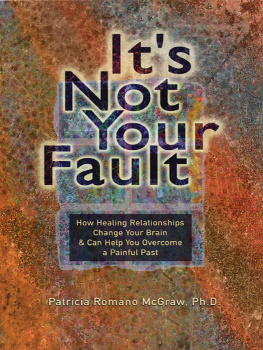
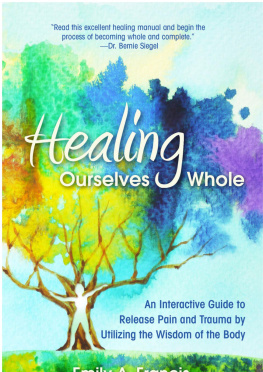
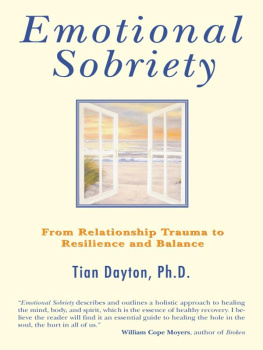
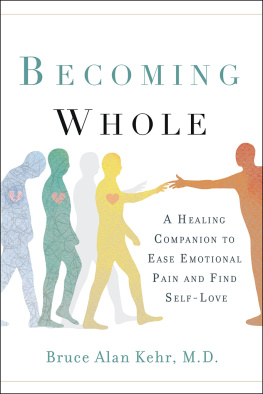
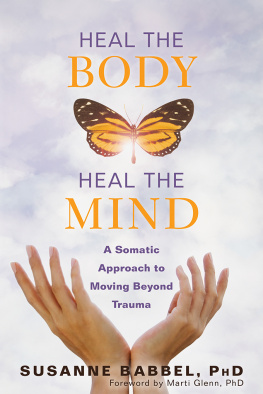
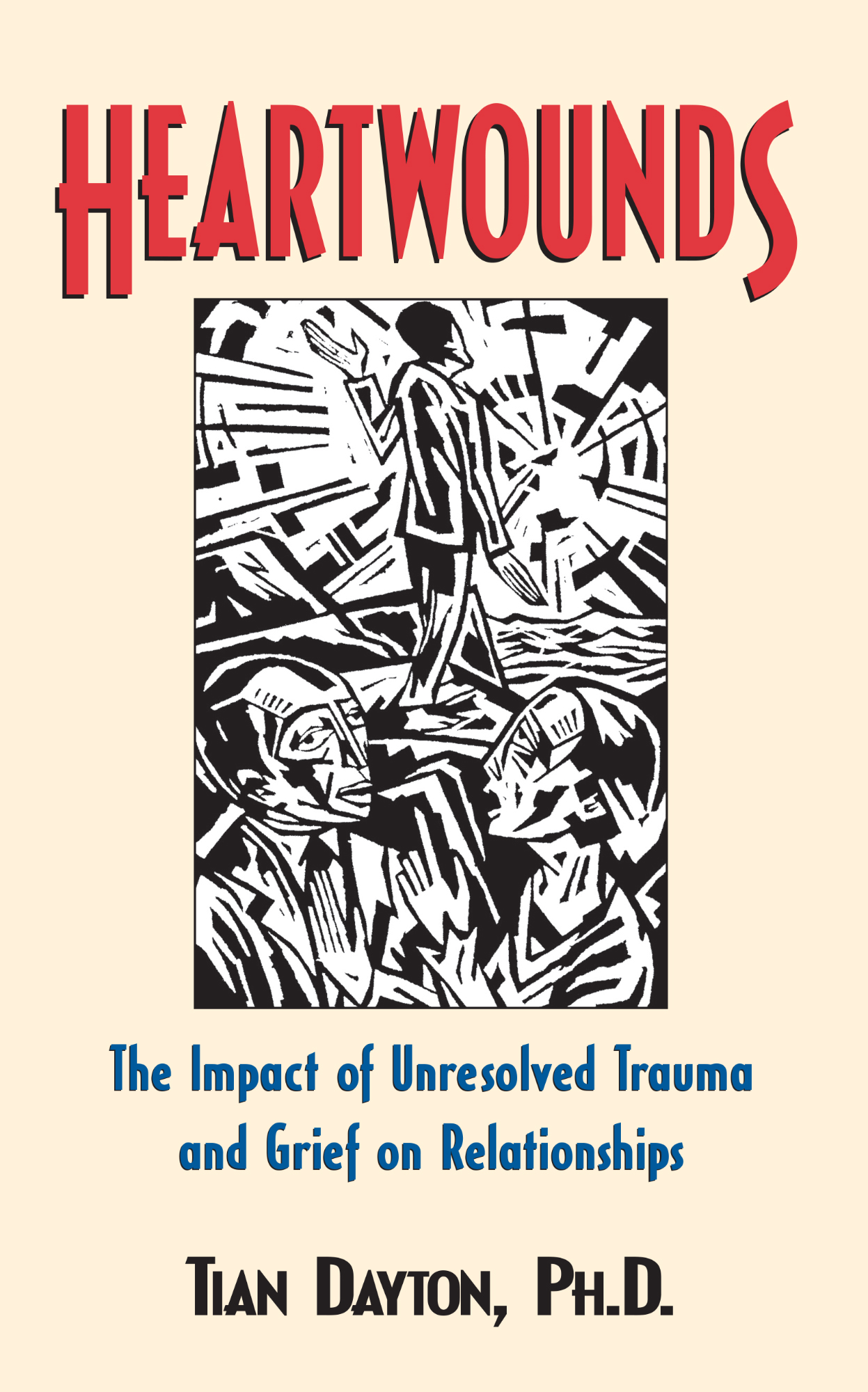

 ACKNOWLEDGMENTS
ACKNOWLEDGMENTS